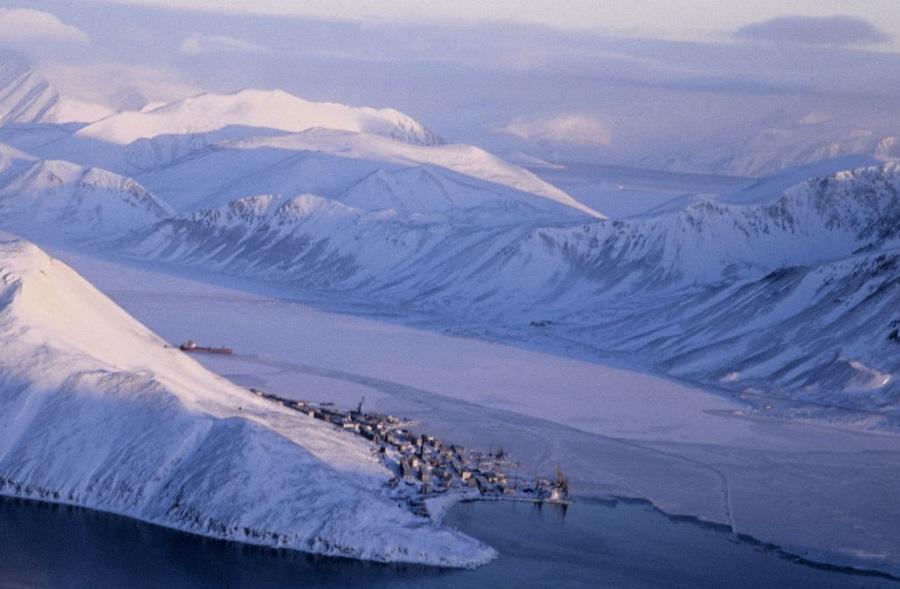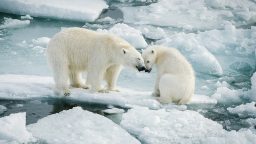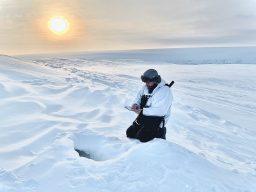
Photo: Nikolai Gernet / GeoPhoto
Myth No. 2. The ice will melt and then, they say, we will heal
Freezing, for example, at a bus stop, it is already practically accepted to reject the idea of climate warming – they say, where is it, your warming. The warming of the climate “on average” is actually obvious: natural zones are shifting to the North. Where trees did not grow before, they appear, the sable (a purely taiga beast) appeared on Taimyr, ticks and other inhabitants of more southern areas are seen to the north.
Another question is that climate warming is expressed in an increase in “hysterical weather”: the frequency of extreme events is increasing: either extreme heat or severe frosts. But somewhere in the average year it gets warmer than before. The causes of warming are also not fully understood: whether it is human influence, or natural cycles of warming and cooling. But that’s not the point in this case. The fact is that legally the Northern Sea Route is closely linked to the fact of the presence of ice.
However, it’s not that simple. It is the difficult ice conditions that provide Russia with the right to establish rules of navigation along the Northern Sea Route – otherwise, the waters of the Northern Sea Route outside the territorial waters would imply free passage of ships from different countries – at least according to current international standards.
The 1984 Convention on the Law of the Sea has article 234 “Ice-covered areas”.
It is usually used as a regulatory framework for the allocation of the Northern Sea Route. It is this circumstance that explains the strange, at first glance, borders of the NSR – in the west it begins from the Kara Gate and Novaya Zemlya, and not at all from Murmansk, for example, where the route of ships passing along the Northern Sea Route actually begins.
The Northern Sea Route is an area in which Russia can regulate shipping precisely because it falls into the category of “ice–covered areas”. The ice-free sea lanes of the Barents Sea outside the territorial waters of Russia are therefore not considered the Northern Sea Route because they do not freeze. There are no references to the condition “ice-covered areas” in Russian regulations governing the specifics of the use of the NSR.
Thus, the Northern Sea Route is “ours” precisely because it is heavy and arctic, and navigation along it requires special attention and huge maintenance costs. If warming causes the ice to melt, the same Chinese plan to take ships closer to the pole, along the middle route, and not along the Northern Sea Route at all. The Northern Sea Route, therefore, is primarily a backup Russian highway, and not transit at all, and not “anti-Suez”.
We are afraid, first of all, of increasing the presence of NATO military contingents in the Arctic – and practically do not notice how powerfully the presence of other countries, and first of all, China, is increasing in the Arctic. China has been working on information support for navigation in high latitudes for a long time. A few years ago, the Chinese specialized satellite Arctic Path Finder was launched to monitor the ice situation.
“The satellite’s special orbit allows repeated observations over most of the Arctic every 48 hours. This allows him to monitor shipping lanes and the state of the Arctic sea ice in almost real time… The satellite will use synthetic aperture radar (SAR) technology, which allows observing the Earth’s surface even at night, through layers of clouds or smoke.”
Myth No. 3. The Northern Sea Route and coastal cities.

Photo: Afanasy Makovnev / GeoPhoto
Let’s return from China to the Russian Arctic. Dreams of developing the NSR are usually linked to the development of coastal cities. But this is probably the most bitter myth of all related to the NSR.
Of course, the development of highways has been a factor contributing to the growth of cities for centuries, and many cities were based “at the crossroads of transport routes.” On the coast of the Arctic Ocean, many settlements related to the maintenance of the NSR also grew: they bunkered (loaded) passing ships – steamships – with coal, provided radio communications, weather forecasts.
But the age of steamships is gone! Ships have become more autonomous, and the country is proud of nuclear icebreakers. But nuclear icebreakers are atomic because they do not need coal bunkering. Similarly, modern ships do not need frequent port calls. As a result, the development of the Northern Sea Route has less and less impact on the development of coastal ports, unless, of course, some valuable cargo is exported through these ports.
Those ports through which something is exported, “just nothing”: This is the 20 thousandth Dudinka, the former capital of the Taimyr district, and today it is “just a port” through which Norilsk is supplied and concentrate is exported. Tiksi and Pevek serve to supply, respectively, Northern Yakutia and Chukotka, but their connection with the development of transit along the NSR is practically absent: most ships with LNG and oil pass by them.
In Murmansk, there is a powerful transshipment of hydrocarbons from ice-class vessels to conventional ones. Components for NOVATEK’s gas liquefaction plants are also being built here and then exported through the NSR to the places of operation. Therefore, Murmansk is probably the main beneficiary of the development of the NSR. And it’s for a simple reason: modern technology does not require coal and other coastal assistance.
Yes, there is a lot of talk about the need to form coastal support for the NSR: and indeed, repair bases, medical centers, etc. are needed. But you need to understand that all this coastal support does not require urban growth. Even if additional repair facilities appear at the NSR, etc., they will provide a very modest number of jobs, and most likely shift ones.
Cities arose in the North in the era of primitive transportation, when, despite all the costs, it was easier to produce locally than. However, today local production is absolutely losing out to import, and throughout the Arctic: polar farms died both in the expanses of the former USSR and, for example, in Alaska – as soon as the road came there. Today, villages in the NSR are more likely to be “consumers” of NSR services than suppliers.
By Nadezhda Zamyatina
The previous part. The next part.


